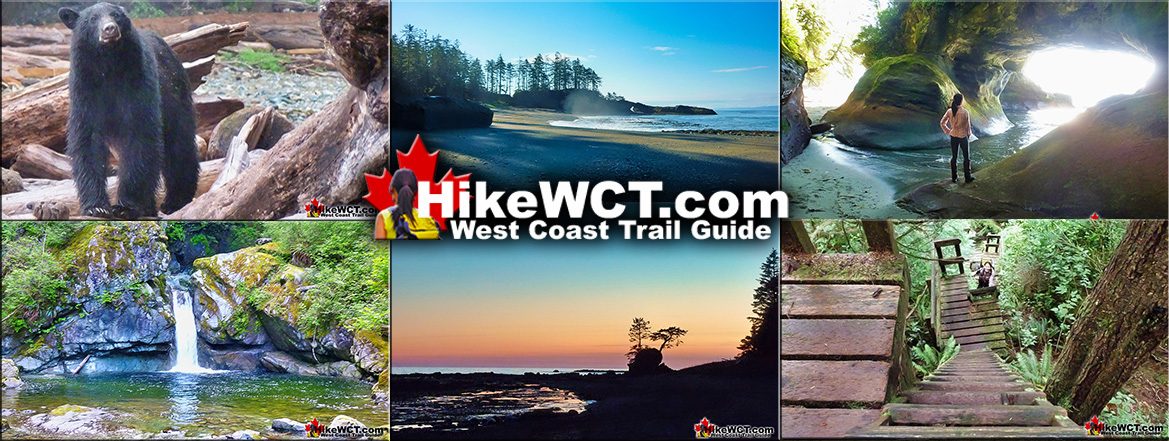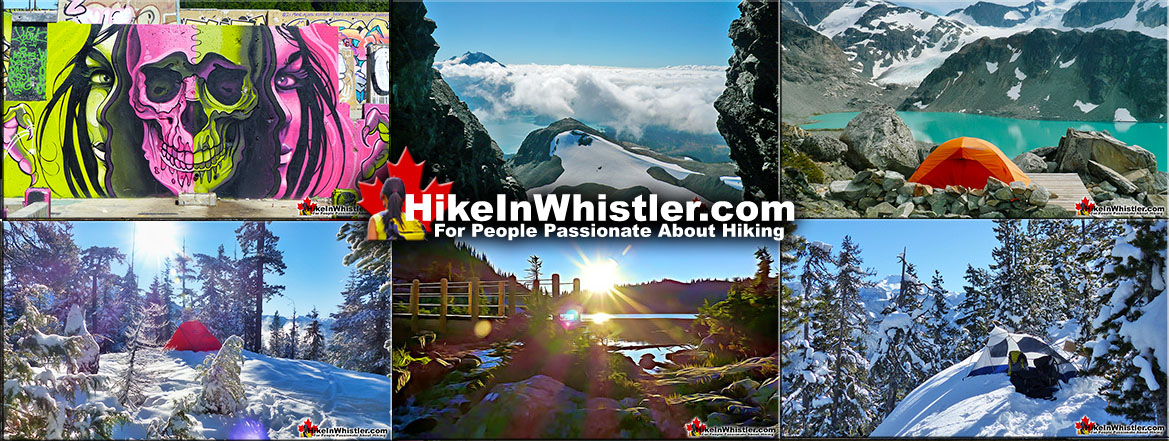![]() Of the many shipwrecks along the West Coast Trail the Valencia stands out as shockingly horrific in almost every detail. First the ship wrecked just a few metres from the West Coast of Vancouver Island. She was intentionally driven up on the reef after an initial impact along an underwater ledge a few hundred metres further out. The quick thinking of the caption by crashing on the reef close to shore should have saved everyone, however over the next 36 hours most would die in the most heart wrenching and brutal ways.
Of the many shipwrecks along the West Coast Trail the Valencia stands out as shockingly horrific in almost every detail. First the ship wrecked just a few metres from the West Coast of Vancouver Island. She was intentionally driven up on the reef after an initial impact along an underwater ledge a few hundred metres further out. The quick thinking of the caption by crashing on the reef close to shore should have saved everyone, however over the next 36 hours most would die in the most heart wrenching and brutal ways.
West Coast Trail Shipwrecks
![]() Alaskan at 4k
Alaskan at 4k ![]() Soquel at 5k
Soquel at 5k ![]() Sarah at 7k
Sarah at 7k ![]() Becherdass-Ambiadass at 8k
Becherdass-Ambiadass at 8k ![]() Michigan at 12k
Michigan at 12k ![]() Uzbekistan at 13.8k
Uzbekistan at 13.8k ![]() Varsity at 17.6k
Varsity at 17.6k ![]() Valencia at 18.3k
Valencia at 18.3k ![]() Janet Cowan at 19k
Janet Cowan at 19k ![]() Robert Lewers at 20k
Robert Lewers at 20k ![]() Woodside at 20.2k
Woodside at 20.2k ![]() Uncle John at 26.2k
Uncle John at 26.2k ![]() Vesta at 29k
Vesta at 29k ![]() Raita at 33k
Raita at 33k ![]() Skagit at 34.2k
Skagit at 34.2k ![]() Santa Rita at 37k
Santa Rita at 37k ![]() Dare at 39k
Dare at 39k ![]() Lizzie Marshall at 47k
Lizzie Marshall at 47k ![]() Puritan at 48.5k
Puritan at 48.5k ![]() Wempe Brothers at 49.4k
Wempe Brothers at 49.4k ![]() Duchess of Argyle at 58k
Duchess of Argyle at 58k ![]() John Marshall at 62.3k
John Marshall at 62.3k ![]() William Tell at 64.2
William Tell at 64.2 ![]() Revere at 69k
Revere at 69k ![]() Cyrus at 75k
Cyrus at 75k
West Coast Trail Campsites
![]() Pachena Bay Campground
Pachena Bay Campground ![]() Michigan Creek at 12k
Michigan Creek at 12k ![]() Darling River at 14k
Darling River at 14k ![]() Orange Juice Creek at 15k
Orange Juice Creek at 15k ![]() Tsocowis Creek at 16.5k
Tsocowis Creek at 16.5k ![]() Klanawa River at 23k
Klanawa River at 23k ![]() Tsusiat Falls at 25k
Tsusiat Falls at 25k ![]() Cribs Creek at 42k
Cribs Creek at 42k ![]() Carmanah Creek at 46k
Carmanah Creek at 46k ![]() Bonilla Creek at 48k
Bonilla Creek at 48k ![]() Walbran Creek at 53k
Walbran Creek at 53k ![]() Cullite Cove at 58k
Cullite Cove at 58k ![]() Camper Bay at 62k
Camper Bay at 62k ![]() Thrasher Cove at 70k
Thrasher Cove at 70k ![]() Pacheedaht Campground
Pacheedaht Campground
Though they were so close to land, the ocean crashed through channels in the reef with terrific violence. Lifeboats full of woman and children were dropped into these churning flows and immediately flipped, and as one witness recalled, the woman and children could be seen in the dark by the ships spotlight for an instant, staring at the light, only to disappear. Other boats full of passengers were thought to be lost, managed to reach shore and survive the night huddled against vertical cliffs. One man was spotted against the cliffs when morning came, he tried to find a way up and was swept away by the ocean and smashed to pieces against the rocks. The Final Voyage of the Valencia by Michael C. Neitzel is a good account of the Valencia shipwreck. Though it is just 128 pages, it covers a tremendous amount of detail that you don’t get in books that devote just one chapter to this extraordinary story. Unless you are extremely well read on the Valencia, you will find a lot of new and surprising information. In particular, Neitzel uses a lot of quotes from various sources that are quite powerful. The quotes allow you to get a sense of the horror the people on board faced over the course of 36 hours. One aspect of The Final Voyage of the Valencia that is inaccurate and poorly understood by the author is the terrain encountered by Valencia survivors and would be rescuers hiking to the scene. It is hard to comprehend how brutally difficult it was before the West Coast Trail was developed, to hike along the West Coast of Vancouver Island. Ravines, rivers, deadfall, impenetrable forest, no defined trail, no trail markers, no bridges, ladders, boardwalks. Neitzel appears to discount all of these and has only hiked the easiest section of the West Coast Trail from the Pachena Bay trailhead to the Pachena Point Lighthouse. This first or last 10 kilometre section of the West Coast Trail is very easy compared to the very challenging rest of the trail. Unfortunately, Neitzel's lack of understanding of what it would have been like for Valencia survivors to hike along the coast, makes some of his conclusions absurdly incorrect.
Overall the book is good and very fast paced, exciting and enjoyable to read. The lack of understanding the difficulty of the West Coast Trail is frustrating to read, though it does clarify one aspect of the Valencia disaster. Why didn't the rescue ships make more of an effort to get close to the Valencia to rescue anyone? The two small would be rescue ships barely approached the Valencia and surprisingly quickly departed up the coast to Pachena Bay to send a landing party to hike to the Valencia instead. Had the crews of the rescue vessels known that the landing parties would take at least 20 hours to reach the Valencia by land, they would have realized that rescue had to be done by sea. The fact that Neitzel still doesn't understand how impenetrable the terrain was in 1906, helps us understand that the captains of the rescue vessels could not possibly have known that attempting a land rescue would take too long.

The Final Voyage of the Valencia
The chapters are laid out as the events happened and he doesn’t waste a lot of time on the history of the Valencia before the wreck. It had quite a colourful history all around the world for years, which could fill chapters, but that history is not terribly interesting and thankfully mostly left out of this book. Chapter one starts off with the fantastic title, “My God! Where Are We?” and runs through a quick history, moving quickly to the ships departure from San Francisco and the beginnings of trouble when they unknowingly underestimated their distance travelled. The end of the chapter finishes with the title of the chapter which captain Johnson said when the Valencia first hits a reef. The picture here was taken from Valencia Bluffs on a calm spring day. The Valencia survivors would have faced this or something similar to it during a winter storm. You have to imagine a huge, stormy sea with giant waves crashing against these cliffs with rain and sleet falling and a few centimetres of snow on the ground.

Lifeboats Become Death Boats
In the second chapter: “Lifeboats Become Death Boats” the chaotic events after the Valencia is driven up on the reef. There is such panicked activity on the ship, yet Neitzel manages to tell the story wonderfully. Pieced together from statements from the survivors, it is quite a job to tease out a readable portrayal of those first few hours. As you read the book, you feel like you are reading a movie script because the story is so detailed with impossibly tragic moments. Like when a mother is passing her baby down from the ship to her husband on a life raft and a wave crashes in causing her the baby to slip between them and disappear into the ocean. This is a picture of a nice weather day view from Valencia Bluffs.

Valencia Shipwreck Wholesale Murder
The third chapter continues the horrific story and it even progresses into increased tragedy. Titled “Wholesale Murder”, it depicts the fear of everyone on board toward getting on the remaining lifeboats. The first lifeboats were smashed and nearly everyone on them disappeared and presumed dead. Getting on one now seemed like certain death. They did manage to successfully launch a boat which eventually managed to get ashore several kilometres away. Meanwhile on the Valencia the survivors spotted a man along the cliffs on the shore. Their hopes were soon crushed as the man fell into the swirling sea and was dashed to pieces against the rocks by the pounding waves. When ships appeared in the distance there was once again renewed hope, however the position of the Valencia was surrounded by reefs and huge waves crashing over. The ships unwilling to approach close enough to make any rescue attempts. While they maintained a distance of a mile or two away, Valencia survivors were occasionally smashed into the sea to their deaths by huge waves crashing over the battered ship.

Nearer My God to Thee
The fourth chapter continues the story even further into despair with the title, "Nearer My God to Thee". The rescue ships disappeared and the last lifeboat and the last life raft were launched. Few passengers would get on and they were largely filled with Valencia's crew. Both of these crafts would eventually find rescue after several hours of torment from the ocean and freezing rain. This is the chapter which the Valencia receives a blow from a huge wave and the remaining survivors were swept into the sea to their deaths.

Daykin, Logan and Martin
The first four chapters are excellent and portray the incredible story in vivid detail. The fifth chapter takes a nasty turn and takes you down a road of naive speculation that is frustrating to read. The kind of armchair quarterbacking that can only be written by someone that has never hiked the West Coast Trail and stood at the top of the cliffs where Valencia wrecked. Neitzel writes about the rescue party from the Carmanah Point Lighthouse and Clo-oose. For perspective, the Carmanah Point Lighthouse is at the 44km point on the West Coast Trail and Clo-oose is at 34km. The Valencia was wrecked at the 18km mark of the trail. Neitzel writes that Phil Daykin, Joe Martin and David Logan left the Carmanah Point Lighthouse Tuesday afternoon with “some line and provisions.” And “No other equipment to possibly help the people on the Valencia was taken.” That reasonable sounding statement flies out the window when you realize the difficulty of trail these men had to hike. First, it should be noted that these days the West Coast Trail is closed during the winter because the harsh weather and winter storms make it even more brutal and dangerous to hike.

Winter, Freezing Rain, Dark, No Ladders or Boardwalks
Second, the wonderfully elaborate network of ladders, bridges, boardwalks we see today were not even imagined back then. Also, in the winter months daylight hours are short and they would be hiking in the dark most of the time with David Logan’s tiny headlight that was not much help. Logan often said that he had to hold the tail of his dog to find his way along the trail in the dark. This illustrates perfectly the absurd difficulty of just one aspect of the astounding challenges faced by anyone trying to hike through a dark rainforest in the winter over a century ago!

No Modern Equipment
Another fact that escapes Neitzel is what these hikers were equipped with compared to modern equipment. They had old fashioned heavy packs, heavy rope, bulky gear and Logan was known to hike the swampy, muddy trail barefoot. Even modern Gore-Tex hiking boots and gaiters get soaked through in knee deep mud in the summer months, let alone what it must be like in the winter. Hiking barefoot in the winter! How painful that must have been, stepping blindly in the dark, with freezing feet through muddy, rocky, root filled terrain. This fact seems almost hard to believe as surely he had some sort of boots to wear or even basic shoes of the time would help. Though if you hike the West Coast Trail today, you often find many hikers that chose to wear simple running shoes and suffer through constantly soaked feet while hiking. Gore-tex hiking boots and gaiters are obviously better than simple shoes, but you still get wet feet, it just takes a lot longer and not nearly as wet. The point is of course, that even today we haven’t figured out a great solution to beating the mud on the trail, except with elaborate boardwalks, which the West Coast Trail has a lot of, but you still find plenty of unavoidable mud sections.

Marathon Through Mud in the Dark
We can safely assume that in January 1906, there were few if any boardwalks, which would make mud a considerably more formidable obstacle to overcome. Which explains why Logan would come to the conclusion that no shoes were preferable to wet shoes. Still, it is hard to wrap your head around this fact looking back from the 21st century. Could you imagine setting out with Logan on this freezing cold, rainy winter day in 1906 and he doesn’t even have shoes on? The fact that they actually succeeded in making it to the site of the wreck as fast as they did, with all the difficulties they faced is astounding. This is a modern picture of the steep ladder network from the beach at Tsusiat Falls up into the forest. The Logan party would have had to negotiate terrain like this without ladders, mostly in the dark and in the middle of winter with freezing rain falling and about 5 centimetres of snow on the ground.

The Trail is Brutal in Nice Weather
The fact that Neitzel criticizes them for not bringing sufficient rescue equipment beyond a rope shows his lack of understanding of how difficult the trail is. In fact, for those of us who have hiked the trail, bringing a hundred foot rope is an impressive feat considering the circumstances. Every extra pound of weight or piece of equipment strapped on your back increases the difficulty of climbing up a steep, muddy ravine, crossing a deep creek, scrambling over or crawling under deadfall or dozens of other challenges that a big, heavy coil of rope and added gear exacerbates.

Logan, Daykin and Martin Incorrectly Portrayed
The Final Voyage of the Valencia's depiction of events once Logan, Daykin and Martin reach the Klanawa River at the 23km mark is also surprisingly inaccurate and appears to be taken from one misleading source. Here Neitzel leaves out well known details and suggests other details that are absurdly incorrect. For example, he writes that they reached Klanawa River in the evening, camped, then didn’t continue until 930am the next morning. The implication is that the shore party relaxed for about 12 hours, then leisurely went on their way. Several pages later he echoes this criticism with astoundingly ignorant statements such as, “Daykin, Logan and Martin left Carmanah sometime Tuesday afternoon and walked as far as the Klanawa River where they spent the night.
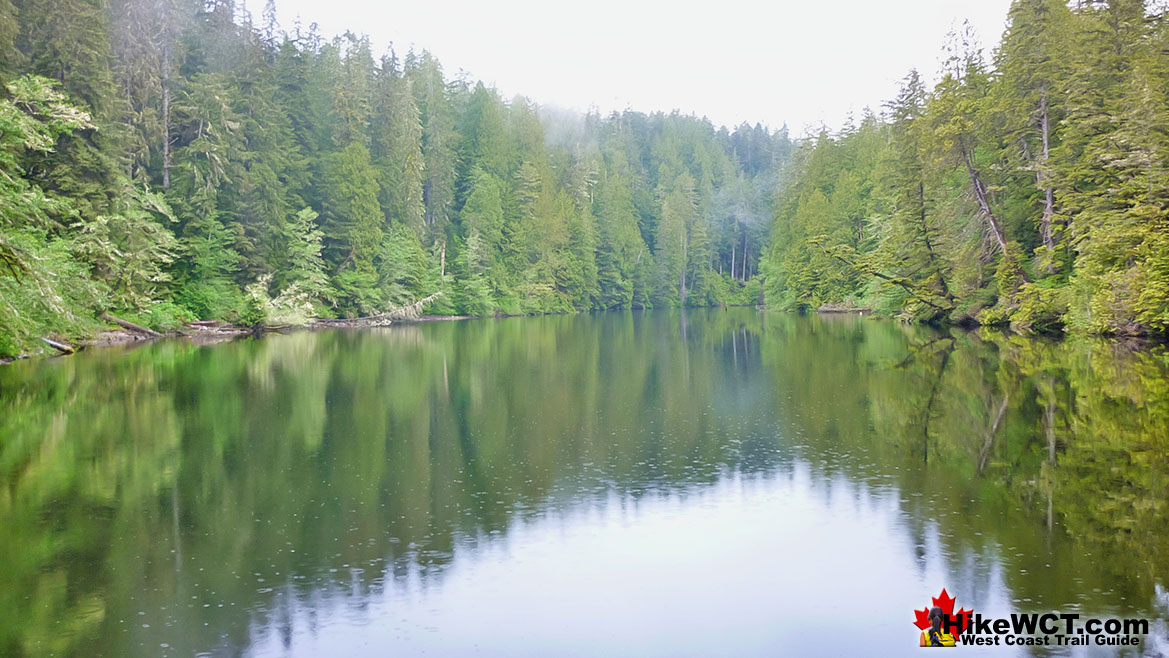
Willful Ignorance of Klanawa River
They crossed the river at about half past nine Wednesday morning, almost two hours after first light. Why so late? We will never know.” First, he describes the 15 kilometre they travelled from the lighthouse to Klanawa River as a walk. Groping your way through a rainforest in the dark, up and down huge, muddy ravines with no trail clearing we see today or ladders, bridges or boardwalks. To arrogantly dismiss this as a walk is so far from the truth that you wonder if the author is being willfully ignorant to push a narrative he is committed to. It just doesn’t seem possible to get such an obvious thing so alarmingly wrong. When Neitzel writes, “Why so late? We will never know.” you can’t quite believe the statement is real. The answer is so obvious as well as documented in numerous accounts of the events during their journey. First, Neitzel leaves out the fact that Klanawa River is huge and fast flowing in the winter and they were unable to cross it without a boat. The pictures here are of the river at its calmest. In the winter it crashes through at a considerable speed and volume. Second, the brutal and exhausting journey was done mostly in the dark and on a freezing cold, rainy day.
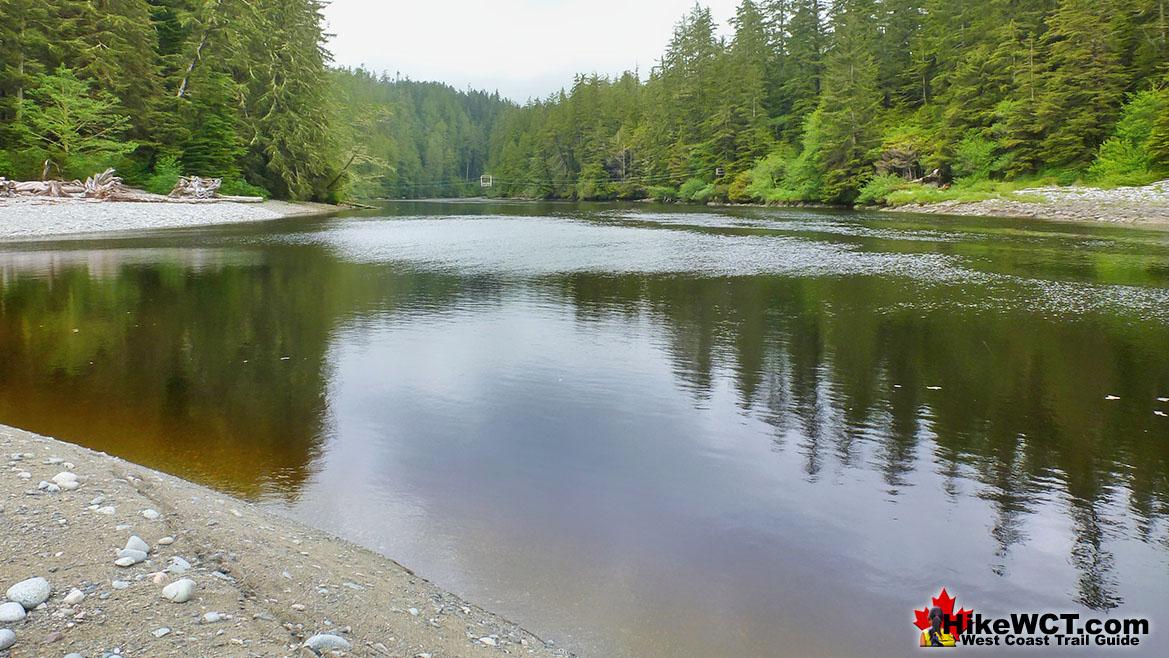
Valencia Survivor Timothy McCarthy
Timothy McCarthy was on the last boat launched, the morning after the wreck and the only lifeboat that made it to shore. He was interviewed by the Seattle Star newspaper about accusations that the shore parties made little effort to reach the cliffs above the crash site. “To all insinuations and direct charges that we made no effort to force our way to the cliff overhanging the stricken Valencia. I want to earnestly and deliberately declare that after struggling through the dense underbrush and skirting insurmountable, perpendicular cliffs, I can truthfully say that we could not have progressed a mile a month toward the Valencia...”
"By retreating into the forest we came upon the telegraph hut and line and we followed it, keeping in mind constantly those people on the steamship pounding on the rocks below, and the best, safest and quickest method of aid. The underbrush was so thick and impenetrable that it was simply beyond human strength to force one’s way through the tough tangle. We tried time after time to make our way seaward through that devilish growth, but could make no impression against it. It required superhuman efforts on our part to even follow the telegraph line, below which a trail had once been blazed. I frankly admit that were we able to once gain that cliff we could have given untold aid to those helpless souls on the fast breaking Valencia."
McCarthy describes hiking through the forest as impossible, requiring superhuman efforts, struggling through the dense underbrush and shirting insurmountable, perpendicular cliffs. This is the reality of hiking they faced and is an accurate description. This is the terrain that Daykin, Logan and Martin faced and which Neitzel characterizes as "a walk."
Klanawa River Crossing
The only way for Daykin, Logan and Martin to cross the Klanawa River is to hike upriver with a canoe and paddle across. That alone is difficult in daylight if you have a canoe. They of course didn’t have a canoe and they arrived at the river in the dark after a brutal 15 kilometre trek through the forest. Neitzel also leaves out the well documented fact that they had to wait for daylight in order to search the forest in the hopes of finding a canoe somewhere in the forest. They eventually found a broken canoe and Logan managed to cross the river and get to a larger canoe to return back and ferry the others across. So, these three men hiked a near impossible 15 kilometres, slept a few hours in the rain during the winter, somehow managed to find a broken canoe in the rainforest, got across the river and all this we have to assume, with little food and soaking wet in the winter.
The Final Voyage of the Valencia Conclusion
 This train wreck of a chapter continues when Neitzel completely misunderstands a statement made by Daykin where he says they “reached the Indian ranch at noon” and “stopped for tea.” Neitzel writes, “Why, being on their way to where people were at the mercy of the sea, would they stop for tea? Did they not feel urgency? Surely they knew the hopeless situation on board.” The answer to those questions is again so obvious that you can’t quite believe Neitzel couldn't figure it out. Did they not feel urgency? Yes they did, they hiked 15km of nearly impossible terrain then incredibly found a way to cross the huge, fast moving Klanawa River. All of this in freezing rain in the middle of winter. Why would they stop for tea? Obviously they didn’t stop to drink cups of tea. “Tea” is a word commonly used in England and Scotland, where these men recently came from, to mean eat. So, if you consider the obvious, that these men have just gone through hell for 24 hours, soaking wet in freezing weather, to “stop for tea” should be read as ‘stop to eat’. Unfortunately, this inexcusable misreading of the facts undermines the credibility of the otherwise good book. Interestingly, Neitzel was contacted by at least one author familiar with the Valencia about his portrayal of Daykin, Logan and Martin. There have been two versions of this book published, with the initial publication titled “The Valencia Tragedy”. That one was written in 1995 and the more recent “The Final Voyage of the Valencia” was published in 2020. Overall The Final Voyage of the Valencia is good, despite the parts about the Daykin, Logan, Martin party. There are a few other details Neitzel gets wrong such as misspelling the the name of the Valencia's second officer. His name was Peterson, not Petterson. He also miscounts the number of survivors as 37, when there were 38. Also, he doesn't list the survivors of the first raft that was found several hours after the second raft was picked up the the Topeka. The final chapters are about the aftermath of the disaster and are very well written with extraordinary details of bodies recovered days later and the investigations that ensued. The book is definitely worth the price of $9.95 on Amazon.ca.
This train wreck of a chapter continues when Neitzel completely misunderstands a statement made by Daykin where he says they “reached the Indian ranch at noon” and “stopped for tea.” Neitzel writes, “Why, being on their way to where people were at the mercy of the sea, would they stop for tea? Did they not feel urgency? Surely they knew the hopeless situation on board.” The answer to those questions is again so obvious that you can’t quite believe Neitzel couldn't figure it out. Did they not feel urgency? Yes they did, they hiked 15km of nearly impossible terrain then incredibly found a way to cross the huge, fast moving Klanawa River. All of this in freezing rain in the middle of winter. Why would they stop for tea? Obviously they didn’t stop to drink cups of tea. “Tea” is a word commonly used in England and Scotland, where these men recently came from, to mean eat. So, if you consider the obvious, that these men have just gone through hell for 24 hours, soaking wet in freezing weather, to “stop for tea” should be read as ‘stop to eat’. Unfortunately, this inexcusable misreading of the facts undermines the credibility of the otherwise good book. Interestingly, Neitzel was contacted by at least one author familiar with the Valencia about his portrayal of Daykin, Logan and Martin. There have been two versions of this book published, with the initial publication titled “The Valencia Tragedy”. That one was written in 1995 and the more recent “The Final Voyage of the Valencia” was published in 2020. Overall The Final Voyage of the Valencia is good, despite the parts about the Daykin, Logan, Martin party. There are a few other details Neitzel gets wrong such as misspelling the the name of the Valencia's second officer. His name was Peterson, not Petterson. He also miscounts the number of survivors as 37, when there were 38. Also, he doesn't list the survivors of the first raft that was found several hours after the second raft was picked up the the Topeka. The final chapters are about the aftermath of the disaster and are very well written with extraordinary details of bodies recovered days later and the investigations that ensued. The book is definitely worth the price of $9.95 on Amazon.ca.
SS Valencia: The Ghost Ship that Haunts the Graveyard of the Pacific
This is a documentary of the Valencia from the Youtube site Big Old Boats. The events are narrated over photos and videos vaguely similar to what the Valencia faced, though the hiking images and coastline images are a bit misleading. For example, the coastline videos appear to be the Oregon coast, not the West Coast of Vancouver Island. Another misleading aspect of the video appears to be the result of basing it entirely on the book The The Final Voyage of the Valencia and getting the Daykin, Logan, Martin shore party details wrong as the book did. The poorly chosen video clip shows three people casually walking a flat trail in the summertime with walking sticks. That clip supposedly represents Daykin, Logan and Martin starting their first 15 hour leg of their trek through the brutal rainforest, mostly in the dark, in freezing rain, through deep mud, up and down steep ravines on the same trail that was at the time referred to as impenetrable.
More Books About West Coast Trail Shipwrecks
West Coast Trail Shipwreck Books




West Coast Trail A to Z




The West Coast Trail by Day

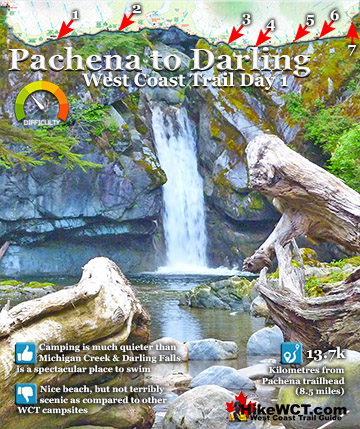

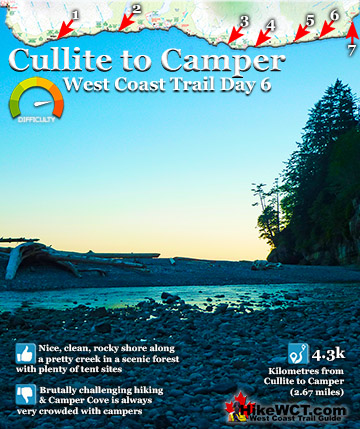
Explore BC Hiking Destinations!

The West Coast Trail

Victoria Hiking Trails
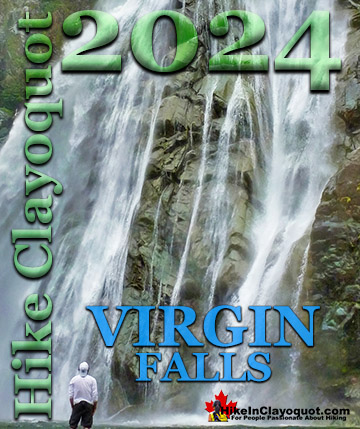
Clayoquot Hiking Trails

Whistler Hiking Trails

Squamish Hiking Trails

Vancouver Hiking Trails


